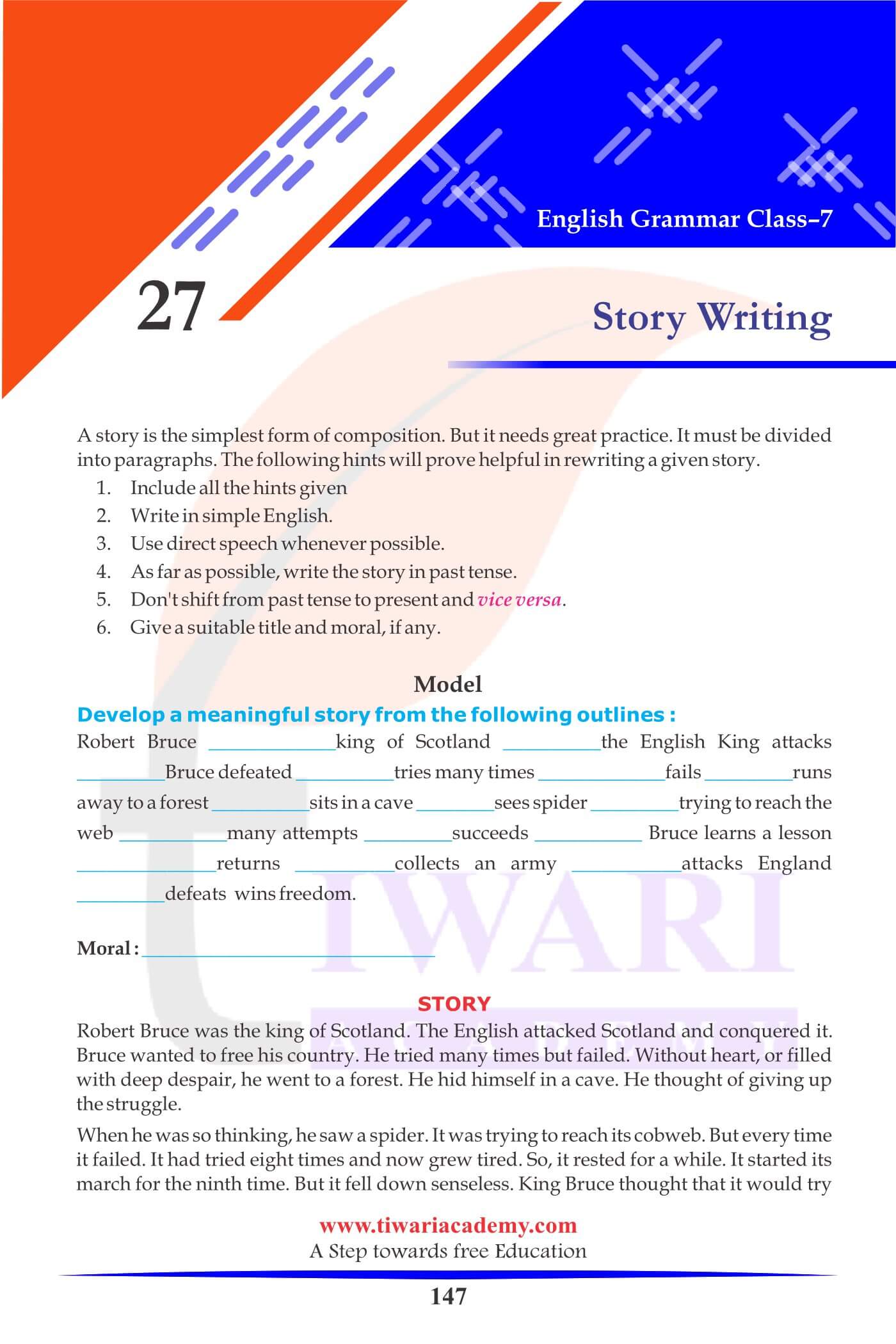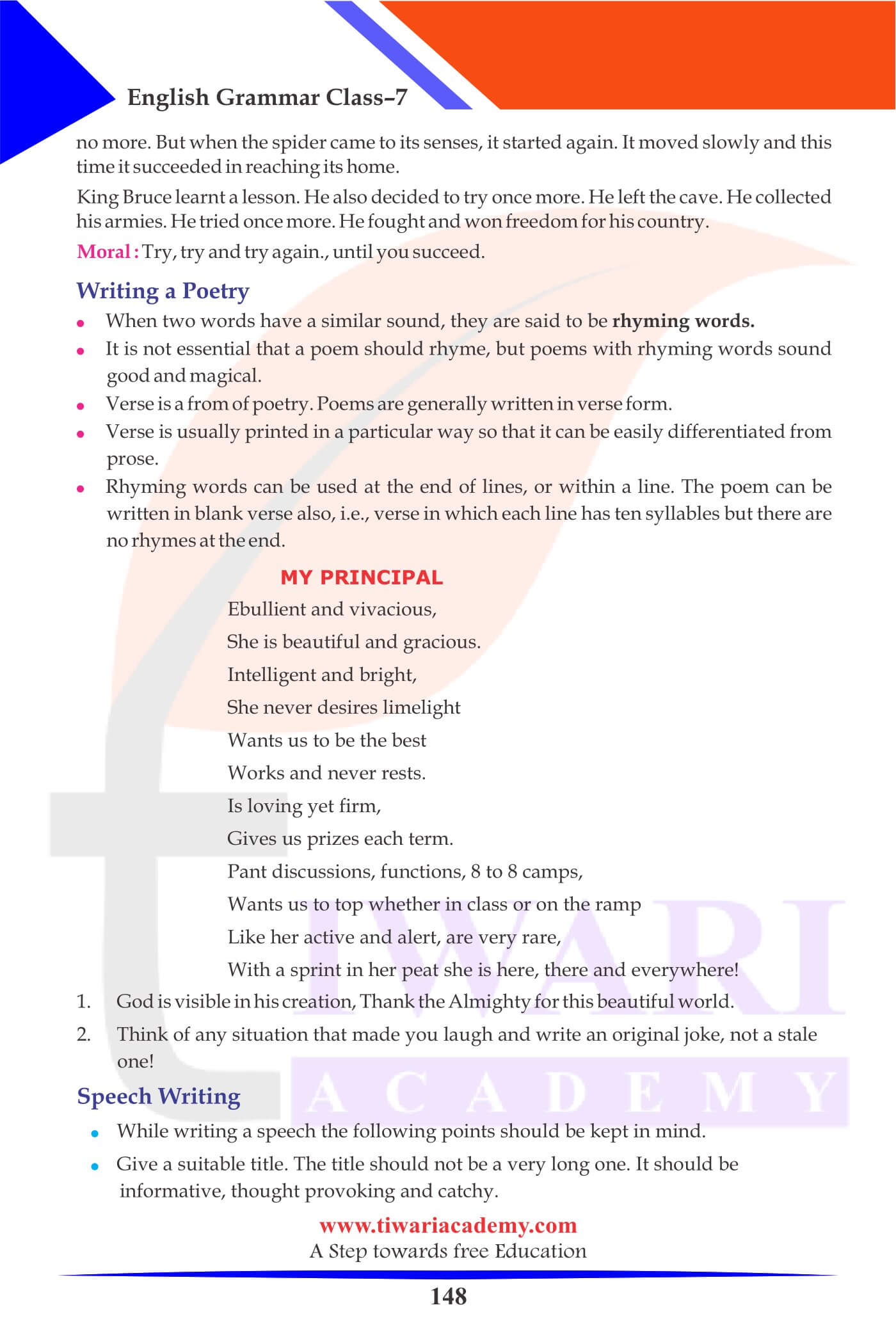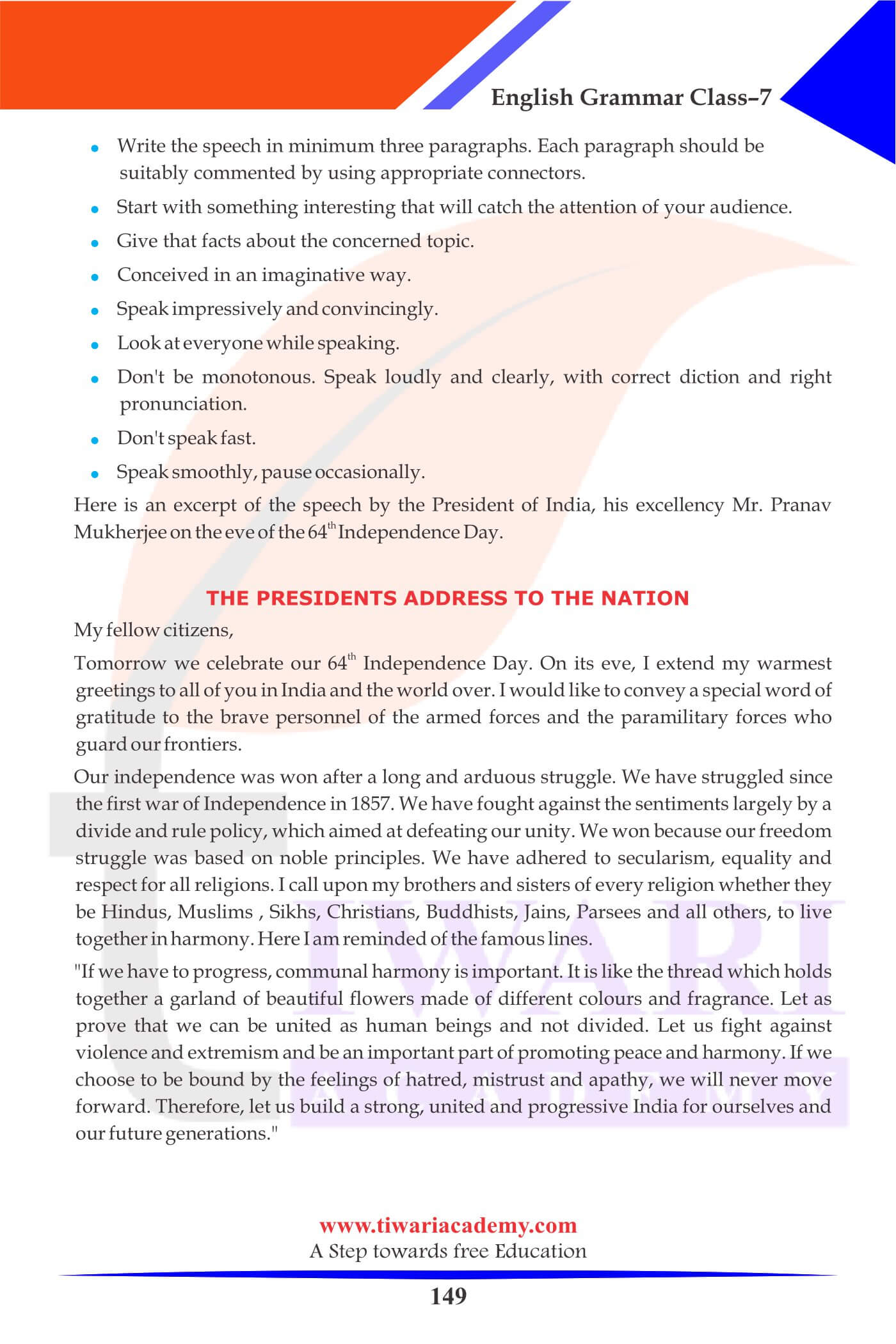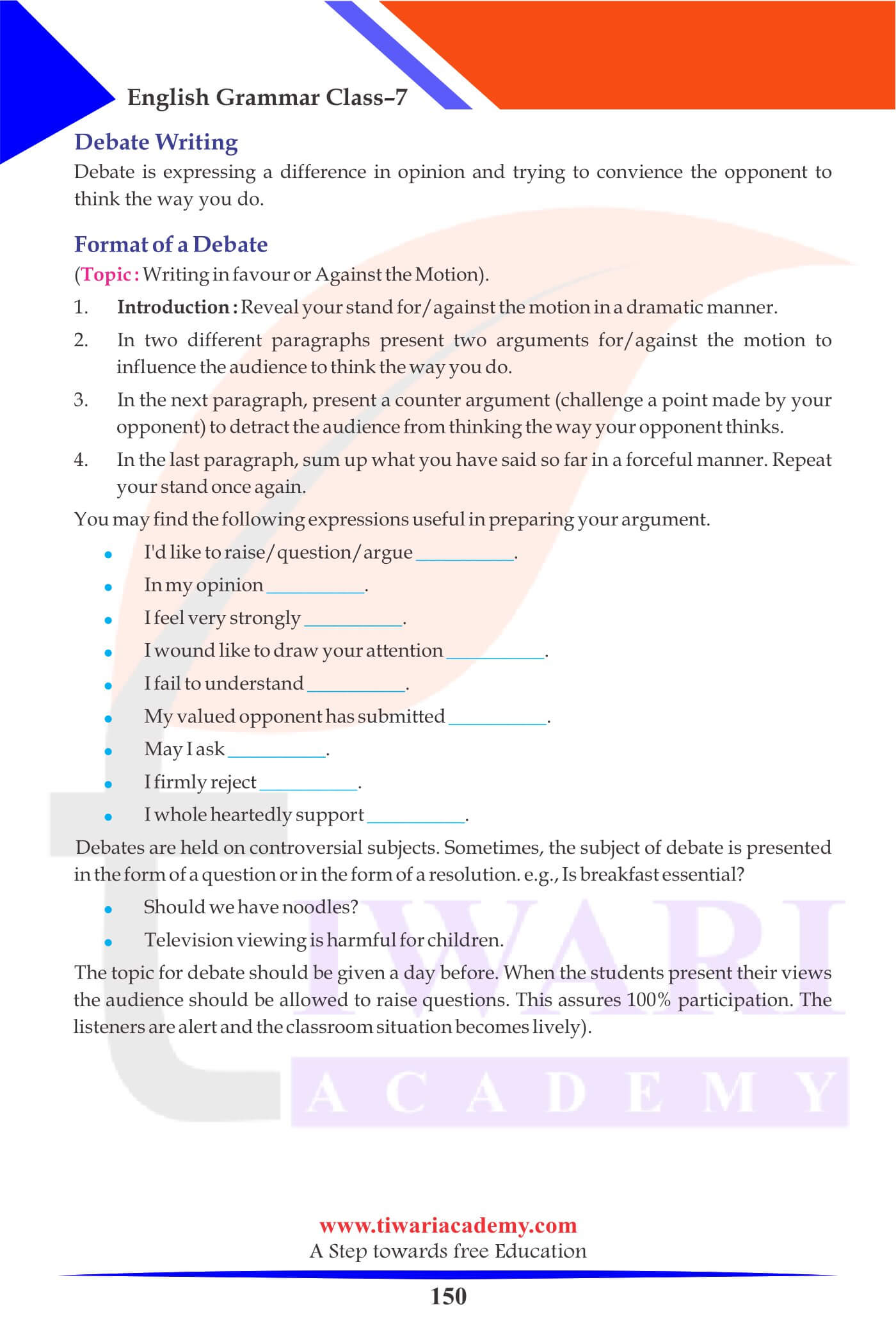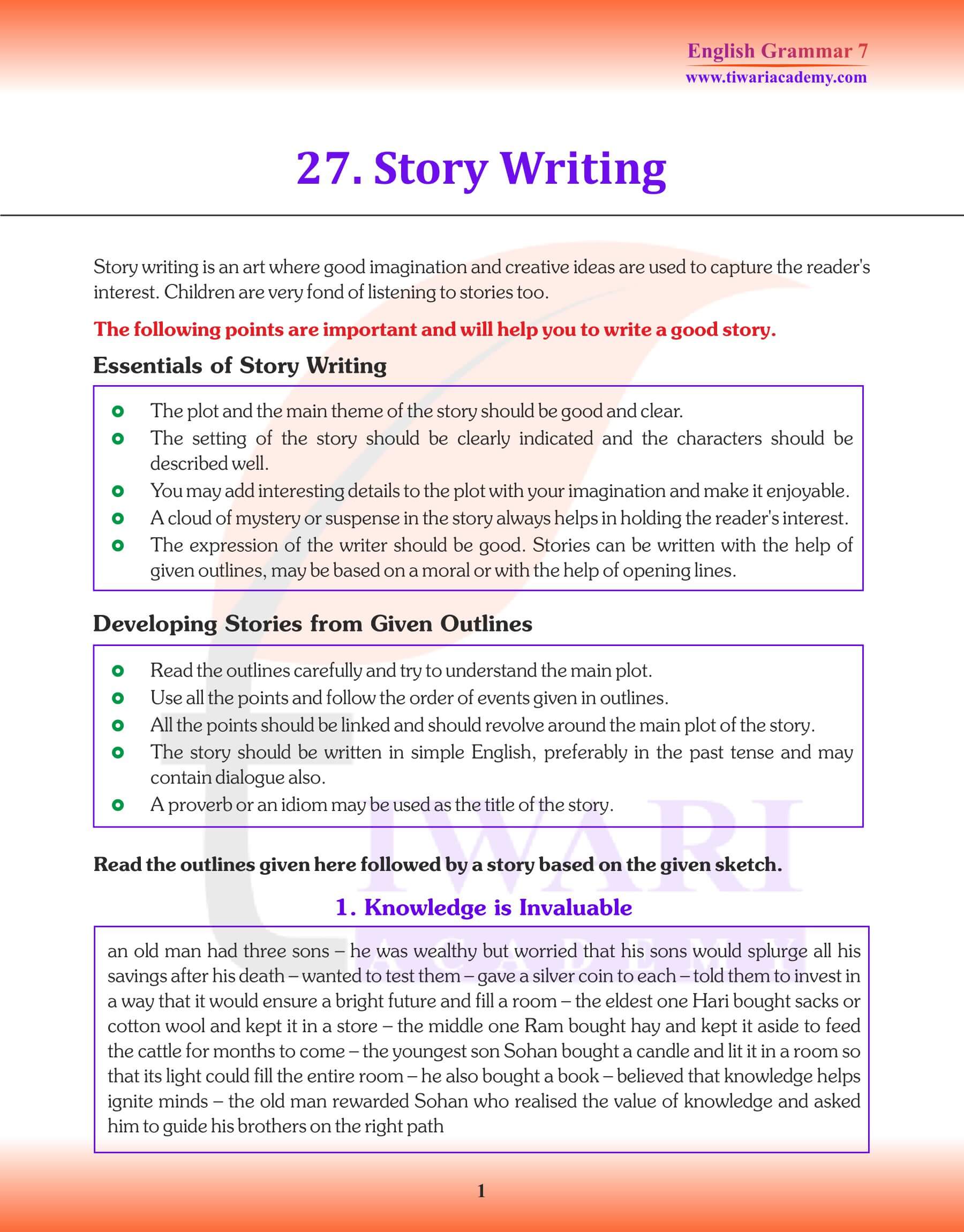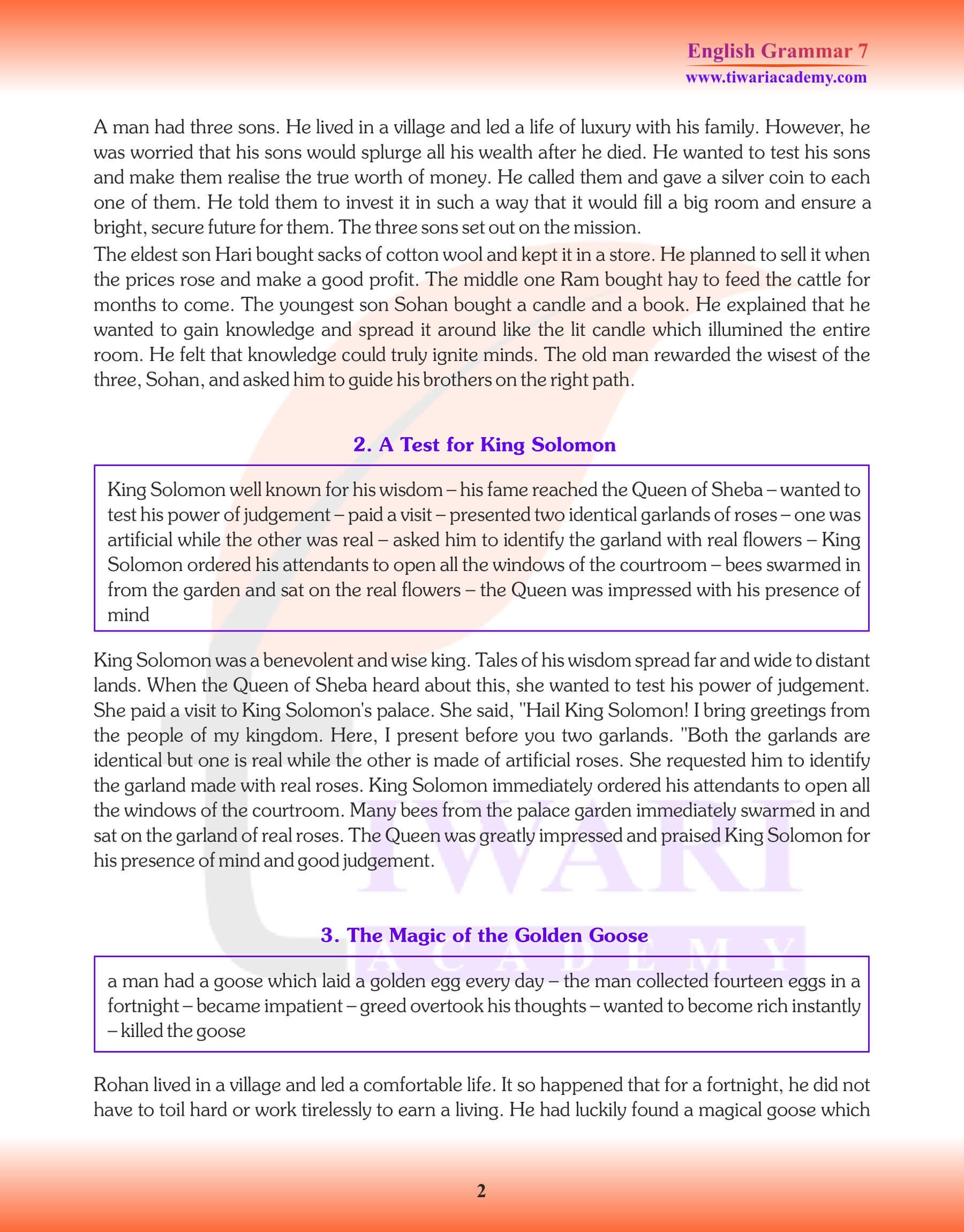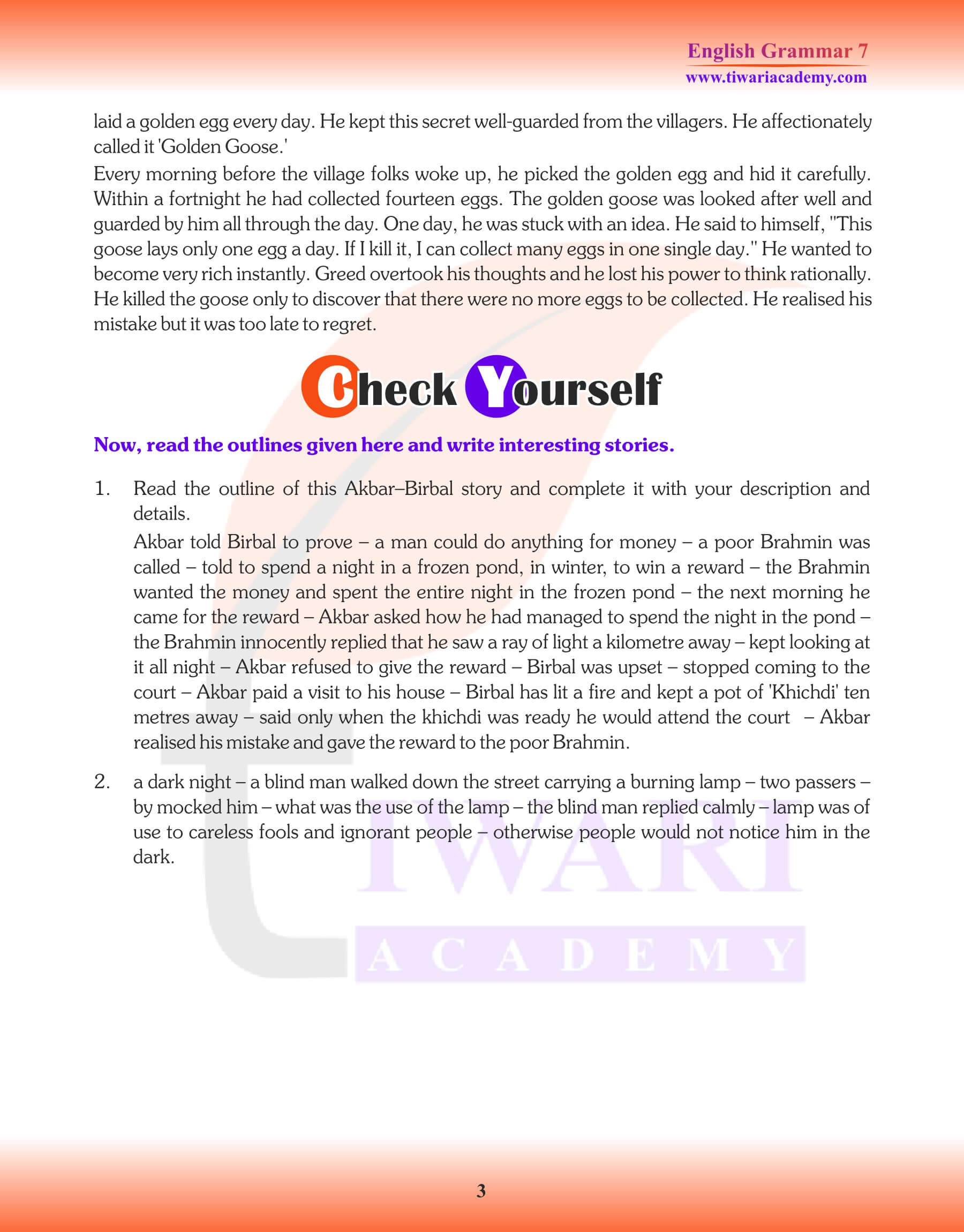Class 7 English Grammar Chapter 27 Story Writing. A story is the simplest form of composition. But it needs great practice. It must be divided into paragraphs. The following hints will prove helpful in rewriting a given story. Include all the hints given, write in simple English, use direct speech whenever possible, as far as possible, write the story in past tense. Don’t shift from past tense to present and vice versa and give a suitable title and moral, if any.
Chapter 27 of the Class 7 English Grammar curriculum introduces students to the enchanting realm of story writing. At its essence, a story, though seemingly simple, requires dedicated practice and thoughtful construction. For an engaging narrative, dividing the content into distinct paragraphs is key. The guidelines for crafting a compelling tale include incorporating provided hints, employing clear and straightforward English, and leveraging direct speech for authentic dialogues.
| Class: 7 | English Grammar |
| Chapter: 27 | Story Writing |
| Study Material: | Textbook and Revision Book |
| Academic Year: | 2024-25 |
Develop a meaningful story
Robert Bruce ___________ king of Scotland ___________ the English King attacks ___________ Bruce defeated ___________ tries many times ___________ fails ___________ runs away to a forest ___________ sits in a cave ___________ sees spider ___________ trying to reach the web ___________ many attempts ___________ succeeds ___________ Bruce learns a lesson ___________ returns ___________ collects an army ___________ attacks England ___________ defeats wins freedom.
Story Writing
Robert Bruce was the king of Scotland. The English attacked Scotland and conquered it. Bruce wanted to free his country. He tried many times but failed. Without heart, or filled with deep despair, he went to a forest. He hid himself in a cave. He thought of giving up the struggle.
When he was so thinking, he saw a spider. It was trying to reach its cobweb. But every time it failed. It had tried eight times and now grew tired. So, it rested for a while. It started its march for the ninth time. But it fell down senseless. King Bruce thought that it would try no more. But when the spider came to its senses, it started again. It moved slowly and this time it succeeded in reaching its home.
King Bruce learnt a lesson. He also decided to try once more. He left the cave. He collected his armies. He tried once more. He fought and won freedom for his country.
Moral: Try, try and try again., until you succeed.
How to write a Poetry
- When two words have a similar sound, they are said to be rhyming words.
- It is not essential that a poem should rhyme, but poems with rhyming words sound good and magical.
- Verse is a from of poetry. Poems are generally written in verse form.
- Verse is usually printed in a particular way so that it can be easily differentiated from prose.
- Rhyming words can be used at the end of lines, or within a line. The poem can be written in blank verse also, i.e., verse in which each line has ten syllables but there are no rhymes at the end.
Speech Writing
- While writing a speech the following points should be kept in mind.
- Give a suitable title. The title should not be a very long one. It should be informative, thought provoking and catchy.
- Write the speech in minimum three paragraphs. Each paragraph should be suitably commented by using appropriate connectors.
- Start with something interesting that will catch the attention of your audience.
- Give that facts about the concerned topic.
- Conceived in an imaginative way.
- Speak impressively and convincingly.
- Look at everyone while speaking.
- Don’t be monotonous. Speak loudly and clearly, with correct diction and right pronunciation.
- Don’t speak fast.
- Speak smoothly, pause occasionally.
Maintaining consistency in the narrative is crucial; for instance, if a story is commenced in past tense, shifting to the present tense can disrupt the flow, potentially confusing readers. Equally important is concluding with a fitting title that encapsulates the essence of the tale and, when relevant, offering a moral to leave readers with a takeaway. Embark on this chapter’s journey to hone your storytelling skills, merging creativity with structure for memorable narratives.
